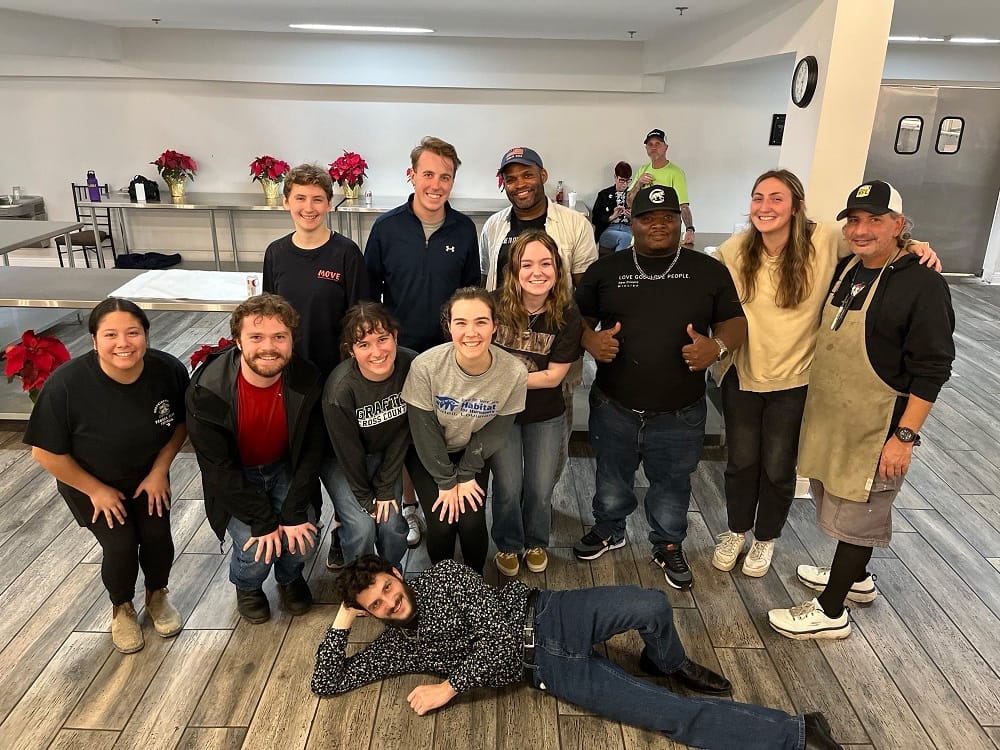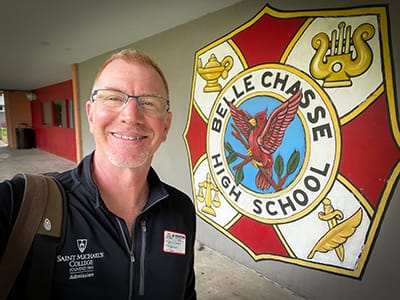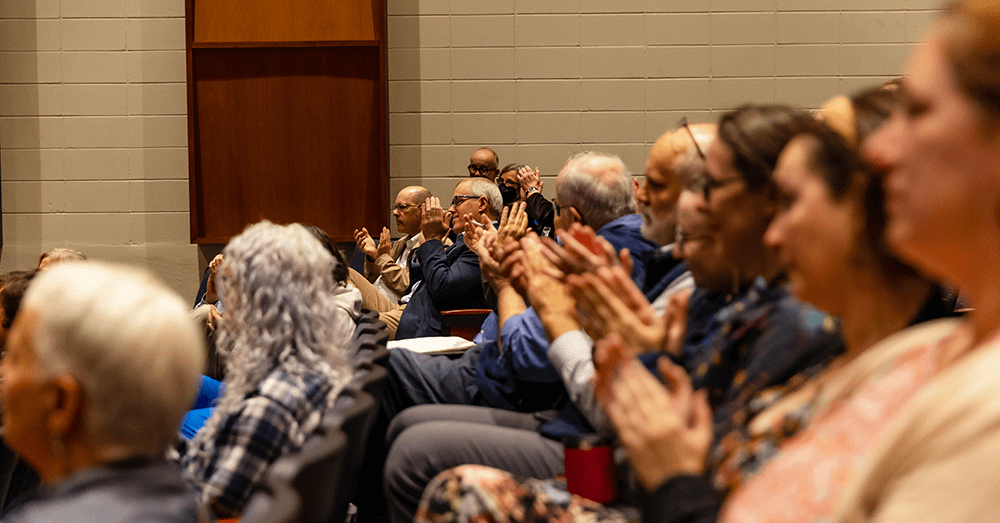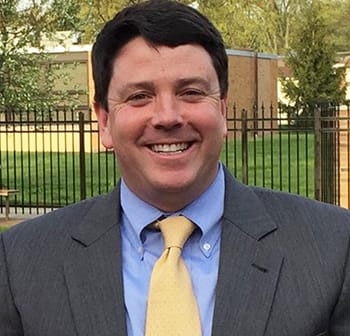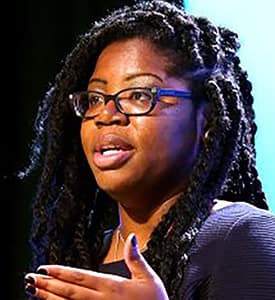Saint Michael’s in thick of big grant for water-basin work
A $20 million award from the National Science Foundation to Vermont EPSCoR will help answer questions about the resilience of Lake Champlain Basin and its watersheds in the face of extreme weather events that are becoming more common in a warming Vermont. Saint Michael’s College researchers and students will be deeply involved, helping provide important information to decision-makers as they govern the basin and develop policies that reach far into the future.
The award, one of the largest in Vermont history, was announced by U.S. Senator Patrick Leahy ’61 and University of Vermont president Tom Sullivan at a press conference at the ECHO Leahy Center for Lake Champlain on April 18, according to a UVM press release. Attending the event from Saint Michael’s were Karen Talentino, vice president of academic affairs; Patrick Gallivan, vice president for community and public relations; and Angela Irvine, director for Sponsored Programs and Foundation Relations.
This five-year project will support research teams from UVM and colleges across the state, including a significant role for Saint Michael’s. Researchers from these colleges will collect data from sensors in streams, soil, and the lake and gather information on adjacent land use – by farms or developers, for instance. A computer model will then be created integrating all three information sources. The model will be used to test management scenarios and identify strategies for preserving infrastructure, environmental health and drinking water quality in the event of intense storms.
“We’ll essentially be giving managers a tool that will help them build resiliency in areas that have been vulnerable in the past,” said Judith Van Houten, University Distinguished Professor at the University of Vermont, who is directing the research effort.
Key players from Saint Michael’s in EPSCoR’s work include Lindsay Wieland, director of the VT EPSCoR Center for Workforce Development and Diversity based on campus; and faculty Declan McCabe, Richard Kujawa and Farrah Fatemi, representing biology, geography/economics and environmental science respectively. All work with diverse groups of college and high schools students, doing lake and stream research, especially in the summer.
Saint Michael’s has a long-standing relationship and collaboration with UVM to provide programs through EPSCoR Vermont, Angela Irvine said, and has been an integral administrator for the undergraduate and high school programs.
“That is now expanding to the middle school level. Since 2009, 21 Saint Michael’s students have participated in research with faculty. Saint Michael’s College has supported 48 additional students from around the state and Puerto Rico in summer research experiences,” Irvine said. “For our high school outreach program, nearly 100 teams from high schools across Vermont have been involved in scientific research through our leadership in the educational aspects of the EPSCoR project.”
Saint Michael’s has received $3.9M in funding for research and work with its educational outreach program. “The impact of opportunity and access to experiences is immeasurable for our students, faculty and the high school students throughout Vermont,” said Irvine. “The college should be very proud of this collaboration … The outcomes of our work will impact generations. I do see this whole project as an extension of the Edmundite mission and vision that we be compassionate stewards of the world around us. EPSCoR reflects that mission on all levels.”
Workforce development a key part of award
A key element of the award will be the work performed by the Vermont EPSCoR Center for Workforce Development and Diversity at Saint Michael’s College (CWDD), which will offer research opportunities to Vermont high schools, middle schools and undergraduates from across Vermont, including a new partnership with Landmark College. Scholarships will be available to Abenaki students, first-generation college students, students with disabilities and veterans who are seeking science, technology, engineering or mathematics (STEM) majors. Girls will be supported through the Vermont Works for Women, Rosie’s Girls Program. Small businesses will also be able to participate through internships and funding from the Small Business Innovation Research Phase (0) program and support through Innovate HERS and Launch VT.
EPSCoR, the Experimental Program to Stimulate Competitive Research, is a program designed to fulfill the National Science Foundation’s mandate to promote scientific progress nationwide. Through the program, NSF establishes partnerships with government, higher education and industry that are designed to effect lasting improvements in a state’s or region’s research infrastructure, R&D capacity and hence, its national R&D competitiveness.
Every year, Saint Michael’s College students are integrated into the summer research internship program. Internships are multidisciplinary experiences and expose students to active university research across all STEM fields. Saint Michael’s College students may be working in watershed areas around the state collecting water samples, analyzing data, answering research questions, and presenting at research conferences, that in the end will give them, and the state, a better grasp on the challenges extreme events and climate change poses for the region.
Lindsay Wieland, director of CWDD, said she was thrilled to have continued funding from the National Science Foundation “that will enable [us] to integrate even more students and teachers into our large research collaborative, which allows us work towards our goals of inspiring students to pursue a degree in a science, technology, engineering, or mathematics (STEM) field, and to provide students with the skills necessary to enter the STEM workforce in Vermont.”
“Another very important component of the grant supports our work towards broadening the participation of underrepresented groups in STEM fields,” she said. This effort is integral to the work we do at the CWDD at all levels of education.”
A diverse team of partners
The entire project will be undertaken by a diverse group of scientists and stakeholders working together with Vermont EPSCoR. In addition to UVM and Saint Michael’s, other partner institutions include Johnson State, Lyndon State, Castleton State, Middlebury, Dartmouth and the Community College of Vermont. Also participating will be key stakeholders, including the Lake Champlain Basin Program and the Vermont Agency of Natural Resources and partners from Quebec and Lake George, NY.
NSF made the award to Vermont EPSCoR partly because both natural and social scientists working on the project will utilize complex systems approaches in creating their predictive models.
An earlier NSF award to Vermont EPSCoR, utilizing the same approach, provided insights into sources of phosphorus and nitrogen in the Lake Champlain basin and how these elements feed algal blooms. The work also identified a dominant role for extreme events in determining water quality in the Basin, providing a strong foundation for the current project’s focus on resiliency.
“I congratulate Vermont EPSCoR and the Vermont Technology Council for securing this federal grant to provide our state’s research community with the tools they need to explore both the science and effects of extreme weather events,” Senator Leahy said. “This research will support valuable new STEM learning opportunities for all students, including high school, undergraduate, graduate and post-doctoral researchers right here in Vermont. We are fortunate for this opportunity to build on our commitment to developing stronger, more resilient communities, while protecting our treasured Lake Champlain.”
For further information about the Vermont EPSCoR program, visit www.uvm.edu/EPSCoR
